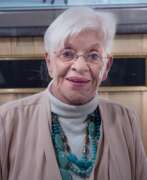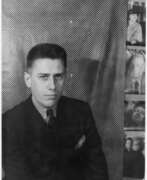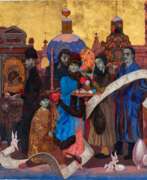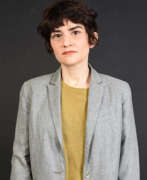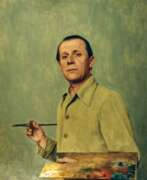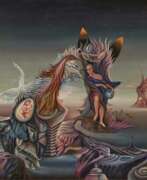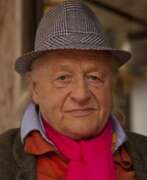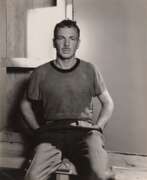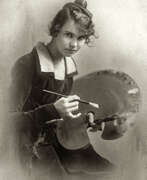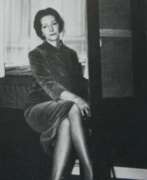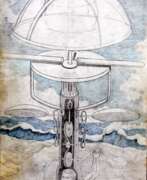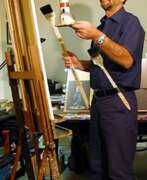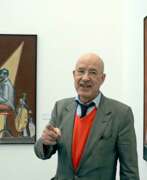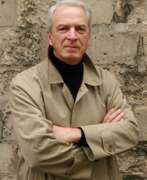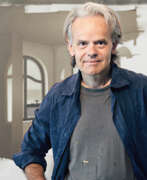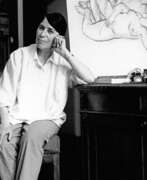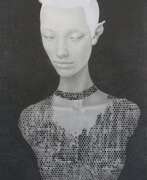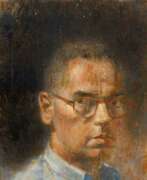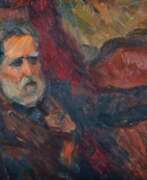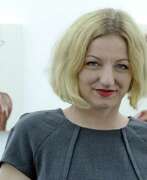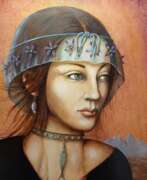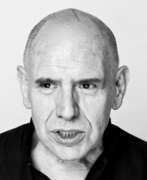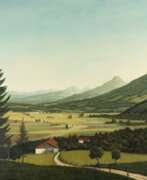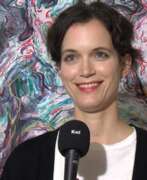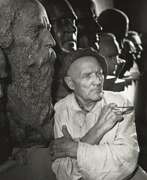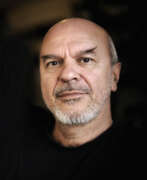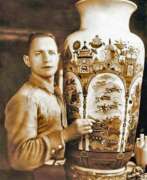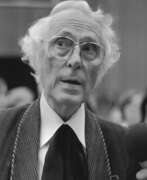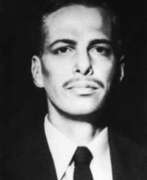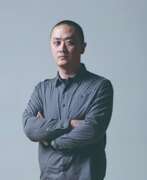Artists Magic realism


Ivan Albright was an American artist, celebrated for his Magic Realism style that presented an exaggerated and abnormal viewpoint on the mundane. Albright's work is recognized for its meticulous detail and dark, mysterious themes, often exploring the human condition and the passage of time. His technique, involving painstakingly detailed brushwork, sometimes with brushes of a single hair, made his paintings unique and highly valued.
His early and mid-career, from 1925 to 1950, saw the emergence of his mature style, characterized by a baroque formal approach and an uncompromising disclosure of the human condition. This period in his career was marked by controversy and innovation, as seen in works like "The Lineman," which, despite criticism from the public for its portrayal of a lineman as inaccurate and depressing, was more successful with art critics.
Ivan Albright's later career, from 1950 to 1983, focused more on portraiture and self-portraits, reflecting a move away from larger-scale works. His life was filled with travel and personal developments, including marrying Josephine Medill Patterson Reeve in 1946 and settling in Chicago, where he produced numerous sketches and drawings from his travels around the world.
The legacy of Ivan Albright is significant; his detailed portraits and still lifes are unparalleled, recognized for their extraordinary attention to detail and stark lighting. He became known as a one-of-a-kind artist, synthesizing his formal training with experiences from his time as a medical orderly during WWI. His work, including notable pieces like "The Picture of Dorian Gray" and "Into the World There Came a Soul Called Ida," can be found in prestigious collections, including the Art Institute of Chicago, which holds a substantial number of his works.
For collectors and experts in art and antiques interested in the unique and captivating world of Ivan Albright's art, his work offers a deep dive into the complexities of human existence and the fleeting nature of life. To stay updated on sales and auction events related to Ivan Albright's work, signing up for updates is recommended. This subscription ensures you remain informed about opportunities to acquire pieces by this distinguished artist, whose meticulous attention to detail and exploration of the human condition continue to captivate audiences.
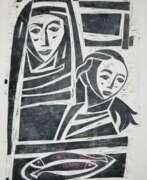

Carl Josef Barth was a German painter and graphic artist.
At the beginning of his artistic career Barth worked in the style of late expressionism, and later his works were attributed to the new objectivity and magical realism. Throughout his life, Barth changed from one style of painting to another. After World War II, the artist focused mainly on pessimistic subjects, ruins and hopelessness.
Carl Josef Barth's brother was the writer Emil Barth.
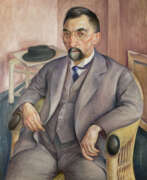

Albert Birkle was a German and Austrian painter, decorator, muralist and glass painter.
Albert's father was the artist Karl Birkle, from whom he received his initial training as a decorative painter, then studied at the Hochschule für die bildenden Künste (now the Berlin University of the Arts). Birkle developed a unique style based on Expressionism and the New Objectivity/Neue Sachlichkeit style. His subjects were lonely, mystical landscapes, typical scenes of Berlin in the 20s and 30s, portraits and religious scenes.
In 1932, fleeing the National Socialists, Albert Birkle moved to Salzburg, Austria, but nevertheless represented Germany at the Venice Biennale as early as 1936. In 1937, his work was declared "degenerate" in Germany and withdrawn from state collections. In 1946, Birkle was granted Austrian citizenship and began working on religious frescoes and decorative windows for various churches and oil paintings. The 1950s and 60s were filled with intense creativity in glass painting.


Herbert Böttger was a German artist. He is considered one of the most important representatives of magical realism in Germany. He studied painting at the Dusseldorf Academy of Art.
Herbert Böttger was a member of the Rhine Secession, was awarded the Prussian State Prize and received the Albrecht Dürer Prize from the city of Nuremberg.
Böttger's paintings are characterised by the composition of the old masters and a photorealistic painting style, but at the same time seem surreal because of their exaggerated realism.
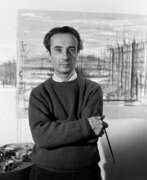

Jean Carzou (Armenian: Ժան Գառզու), birth name: Garnik Zouloumian (French: Karnik Zouloumian; Armenian: Գառնիկ Զուլումեան) was an Armenian-French artist: painter, graphic artist, scenographer, book illustrator, representative of the Paris School. Years of creative activity - 1925-1999. The characteristic definition of Karzu's works is "magic realism".
Jean Carzou's works demonstrate a unique combination of realism and fantasy. His ability to give ordinary scenes mystery and intrigue distinguishes his work. Depictions of bustling city streets, serene landscapes or poignant human figures evoke a sense of contemplation and encourage viewers to delve deeper into the subject matter of each work.


Ithell Colquhoun is a British surrealist painter, writer, poet, and playwright who hails from India. She has been called "the mother of British surrealism. Influenced by Salvador Dali, she depicted plants and the world around her in what she herself called "magical realism.


Heinrich Maria Davringhausen was a German painter associated with the New Objectivity. Davringhausen was born in Aachen. Mostly self-taught as a painter, he began as a sculptor, studying briefly at the Düsseldorf Academy of Arts before participating in a group exhibition at Alfred Flechtheim's gallery in 1914. He also traveled to Ascona with his friend the painter Carlo Mense that year. At this early stage his paintings were influenced by the expressionists, especially August Macke.
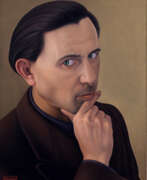

Cagnaccio di San Pietro, real name Natale Bentivoglio Scarpa, Italian painter of magical realism. He studied painting at the Academy of Fine Arts in Venice.
Cagnaccio di San Pietro in the beginning of his creative activity devoted to salon painting, was fond of futurism, then worked for a long time as a representative of the Italian variant of the New Realism. His work is characterised by portraits, nudes, still lifes, paintings of religious content and domestic subjects.
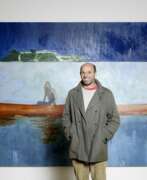

Peter Doig, a Scottish painter, is renowned for his distinct, evocative style that captures elements of the natural world intertwined with a sense of the fantastical. Known for his vibrant use of color and imaginative landscapes, Doig's works often explore themes of memory and nostalgia, heavily influenced by his experiences in Canada, Trinidad, and the United Kingdom.
Peter Doig’s journey in the art world gained significant momentum after his education at Chelsea College of Arts, which was followed by his winning the prestigious Whitechapel Artist Prize in 1991. This recognition led to a solo exhibition at the Whitechapel Art Gallery where he showcased key works that helped define his career, such as "Swamped" and "The Architect's Home in the Ravine."
Throughout his career, Peter Doig has demonstrated a mastery of painting, evident in works like "White Canoe" and "Echo Lake," which reside in major collections such as the Tate and the Saatchi Collection. His art not only reflects his personal history and travels but also incorporates elements from cinema and photography, giving his paintings a dream-like quality that invites viewers to interpret their narratives.
Peter Doig's work has been exhibited worldwide, including significant retrospectives at the Fondation Beyeler in Basel and the Louisiana Museum of Modern Art in Denmark. His achievements in the art world have been recognized with numerous awards, including being named the 2017 Whitechapel Gallery Art Icon.
For those interested in the contemporary art scene, Peter Doig remains a pivotal figure whose works continue to inspire and provoke deep reflection. Art collectors and enthusiasts keen on following updates related to new sales and auction events featuring Doig’s work can sign up for targeted updates here.


Maria Paula Figueiroa Rego was a Portuguese-British visual artist known particularly for her paintings and prints based on storybooks. Rego's style evolved from abstract towards representational, and she favoured pastels over oils for much of her career. Her work often reflects feminism, coloured by folk-themes from her native Portugal.
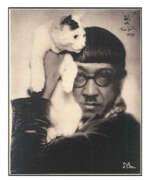

Tsugouharu Foujita was a French twentieth-century artist of Japanese descent. He is known for his unique style, combining elements of Japanese painting and printmaking with European realism.
Foujita created a wide range of works in a variety of genres, including nudes, images of cats, portraits of women and children, and self-portraits. He later converted to Catholicism and began creating paintings with religious themes. The artist was internationally recognized, and his work was exhibited in many countries around the world. His work was characterized by the perfection of pictorial technique, virtuosity of drawing and an atmosphere of sophistication. The master also showed talent in graphics, photography, ceramics, theater, cinema and fashion design. Prices for his paintings were comparable to those of Picasso's works.


Gregory Joseph Gillespie was an American magic realist painter.
Gillespie became known for meticulously painted figurative paintings, landscapes, and self portraits, often with a fantastical element. Many of his early works were made by painting over photographs cut from newspapers or magazines, transforming the scenes through photographic collage and by adding imaginary elements. In his later work he abandoned his early fascination with creating hyper-realized realistic imagery, instead focusing on a looser and more expressive style. He often combined media in an unorthodox way to create shrine-like assemblages.
Gillespie's work is in the collections of the Whitney Museum, the Arkansas Arts Center, and the Butler Institute of American Art, among others.
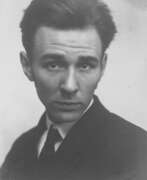

Walter Gramatté was a German expressionist painter who specialized in magic realism. He worked in Berlin, Hamburg, Hiddensee and Barcelona. He often painted with a mystical view of nature. Many of his works were inspired by his experiences in the First World War and his illness.


Uwe Henneken is a German artist living and working in Berlin.
Henneken began his studies at the State Academy of Fine Arts in Karlsruhe and completed his studies at the University of the Arts in Berlin. In his grotesque, amusing and fabulous paintings and sculptures, the artist transports the viewer into strange worlds. Especially impressive are the brightly colored landscapes, as in a surrealistic fever dream. In these psychedelic sets move figures unimaginable in reality, sometimes comic and cartoonish, sometimes tragic, and sometimes both at the same time.
Henneken has spent a lifetime researching the theme of shamanism and believes that the shaman is the prototype of the artist and therefore the contemporary artist is directly connected to his professional ancestor. Promoting the idea of otherworlds, through magical realism the artist brings magic to real life.
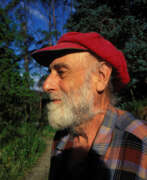

Friedensreich Regentag Dunkelbunt Hundertwasser was an Austrian visual artist and architect who also worked in the field of environmental protection.
Hundertwasser stood out as an opponent of "a straight line" and any standardization, expressing this concept in the field of building design. His best known work is the Hundertwasserhaus in Vienna, which has become a notable place of interest in the Austrian capital, characterised by imaginative vitality and uniqueness.


Alexander Kanoldt was a German painter of the first half of the twentieth century. He is known as a painter, landscape and portrait painter, a representative of the New Materiality movement.
Alexander Kanoldt was one of the founders of the New Munich Art Association and the Blue Rider group. His style evolved from Neo-Impressionism to magic realism, to depicting plants, objects, landscapes and people in angular forms. During the Nazi regime, he tried to adapt to the styles in demand, but many of his works were confiscated as belonging to "degenerate art."
Kanoldt was a professor at the Berlin Academy of Art and director of the State School of Art in Berlin until his retirement in 1936.
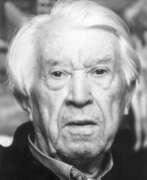

Franz Radziwill was a German artist of the twentieth century. He is known as a landscape painter, graphic artist and printmaker associated with the artistic movement of "new materiality".
Franz Radziwill created paintings that are characterized by careful elaboration and the use of glaze techniques borrowed from the Old Masters. He used elements of industrial buildings and modern technology, including ships and airplanes, in his landscapes. The results of his work can be categorized as magical realism.
In 1933 Radziwill became professor of painting at the Düsseldorf Academy of Art, but in 1935 the Nazis stripped him of this position, declaring his work degenerate art.


Otto Rodewald is a German painter and graphic designer.
Rodewald studied at the Hamburg State Art School and participated in exhibitions. Rodewald traveled extensively, mostly in Europe and the Middle East; between 1929 and 1931 he lived in the Tunisian artists' village of Sidi Bou Said, where he was captivated by Eastern exoticism. His style can be categorized as magical realism and new objectivity. He also painted portraits in the Neo-Saxon style.
Otto Rodewald later co-founded the art club Die Insel and from 1928, after participating in several exhibitions, became a permanent member of the Hamburg Secession and a member of the Hamburg Artists' Association.
During the National Socialists' campaign against degenerate art in 1933, some of Rodewald's works were banned, but in order to survive, the artist continued to work with Hitler's government, fulfilling their commissions. After the end of World War II, the artist remained active until his death.
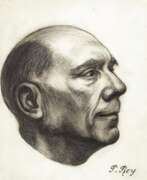

Pierre Roy was a French surrealist painter. He is known for his realistically painted compositions of ordinary objects in unexpected arrangements. After gaining his baccalauréat at the local school he joined a firm of architects before enrolling at the Ecole des Beaux-Arts in Paris. Disappointed with the course, he left to work on the designs for the 1900 Paris Exposition.
His work is classed as surrealism, and is based on assemblages of everyday objects such as shells, vegetables and fruits, woollen reels, ears and seeds, eggs and ribbons arranged to create poetic images.
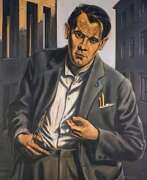

Walter Schulz-Matan was a German painter of magic realism. After training as a decorative painter, the Thuringian Walter Schulz-Matan led a life of wanderings across Europe. After military service and captivity in World War I, he lived in Munich from 1919, maintained his first studio in Munich-Schwabing from 1920 and worked as a stage painter for the "Neue Bühne". From 1930 he was one of the co-founders of the exhibition group 7 Munich painters. Schulz-Matan was also a member of the Neue Secession and the Deutscher Künstlerbund. In the New Objectivity art movement, Schulz-Matan developed his own artistic specificity in the Magic Realism movement. During the Second World War he worked as a war painter in France, then again as an artist in Munich.


Herbert Spangenberg was a German painter of the Lost Generation.
Stylistically, Spangenberg's early work can be classified as New Objectivity, especially Magical Realism, although some of his works have Surrealist features. While his pictures in the late 1920s were achromatic and dark, from the 1930s they turned to colourfulness and brightness. From the late 1940s onwards, his style increasingly turned to abstract painting with a gradual abandonment of the object. In 1952 he exhibited a completely abstract painting in Cologne, but his pictures usually contain geometric forms, sometimes also formal structures, as in the painting Zug der Fische. The Synagogue Windows of 1960 could again be assigned to Geometric Abstraction, if symbols were not incorporated. In his late work, from 1968 onwards, he mainly created women's pictures influenced by Pop Art or Art Deco in dark tones, whose painted faces are occasionally grotesquely satirically exaggerated, as in some pictures of the Verism of the New Objectivity in the 1920s. Now and then they are slightly reminiscent of figures by Richard Lindner.
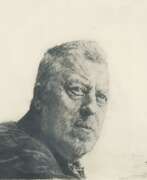

Ferdinand Staeger was a Czech-born German symbolist painter and graphic artist, illustrator and fabric designer.
Staeger studied at the School of Technical Design in Brno and then the School of Applied Arts in Prague, from 1908 he lived in Munich and collaborated with the magazine Jugend. He was a participant in the First World War, his war drawings are characterized by humanity. After the war he illustrated books by Gerhard Hauptmann, Josef von Eichendorff, Eduard Mörike and Adalbert Stifter with great success.
During the Third Reich, Staeger collaborated with the authorities by painting several propaganda pictures, for which he was awarded the title of professor. In 1943 he lost his home in Munich to Allied bombs and many works were lost.
After World War II, he painted in an impressionist style, creating paintings of mythical, mystical, symbolic and religious themes. Many works belong to the genre of "magic realism". Staeger is also known as a tapestry designer, master of etching and ex-libris, and was a member of the Association of German Artists. His wife Sidonie Springer (1878-1937) was also a painter and graphic artist.


Niklaus Stoecklin was a Swiss painter and graphic artist, representative of the New Objectivity and magic realism.
After the Munich School of Arts and Crafts Niklaus entered the Basel School of Arts and Crafts, worked extensively, actively participated in exhibitions and traveled. In 1917, Stoecklin created his masterpiece Casa Rossa. His favorite genres were still life, portraiture, and landscapes, particularly city views. For many decades, Stoecklin also worked as a poster designer, designing stamps. Some of his posters have become icons of international poster art.
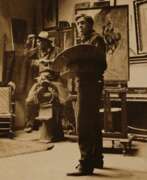

Andrew Newell Wyeth, an American visual artist, is renowned for his mastery in realism and regionalism. Born in 1917 in Chadds Ford, Pennsylvania, Wyeth was primarily a realist painter, deeply influenced by his father, N.C. Wyeth, a notable artist himself. Andrew's artwork, characterized by its clear, razor-sharp technique and a hauntingly eerie atmosphere, often depicted the land and people around him in rural Pennsylvania and Maine.
Wyeth's most celebrated work, Christina's World (1948), is housed in the Museum of Modern Art in New York City. This painting illustrates a woman lying in a field, looking toward a distant farmhouse, an image that has become an icon of American art due to its emotional depth and simplicity of composition. The work encapsulates Wyeth's ability to invoke profound personal and emotional landscapes through the meticulous depiction of physical settings and figures.
Andrew Newell Wyeth continued painting almost up until his death in 2009, leaving behind a vast legacy that has influenced many artists. His works remain highly valued by collectors and are often featured in major museums and galleries worldwide. To stay updated on exhibitions and sales of Andrew Wyeth’s art, sign up for our newsletter—ensuring you're informed about the latest auction events and product sales related to this profound artist.
